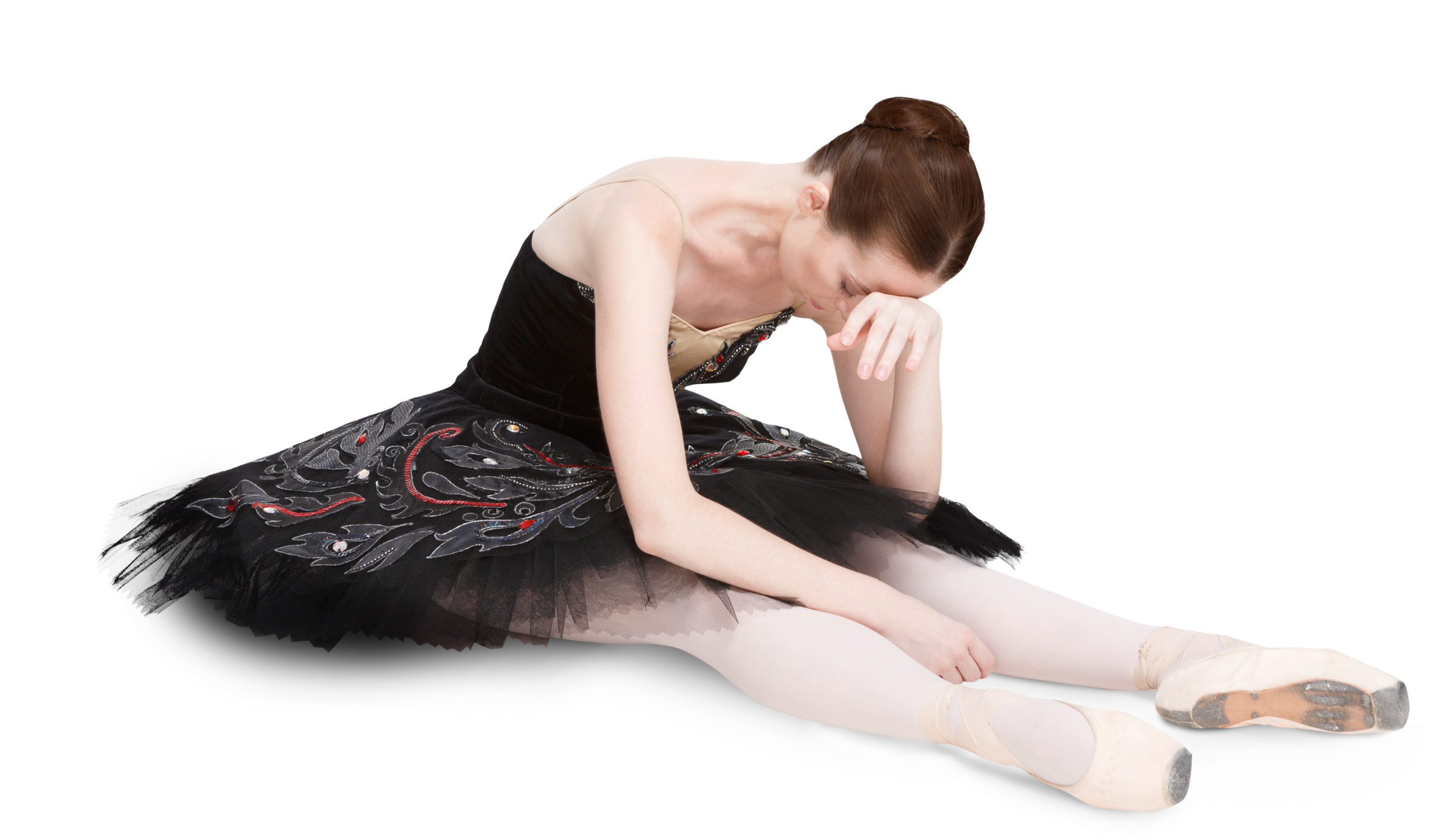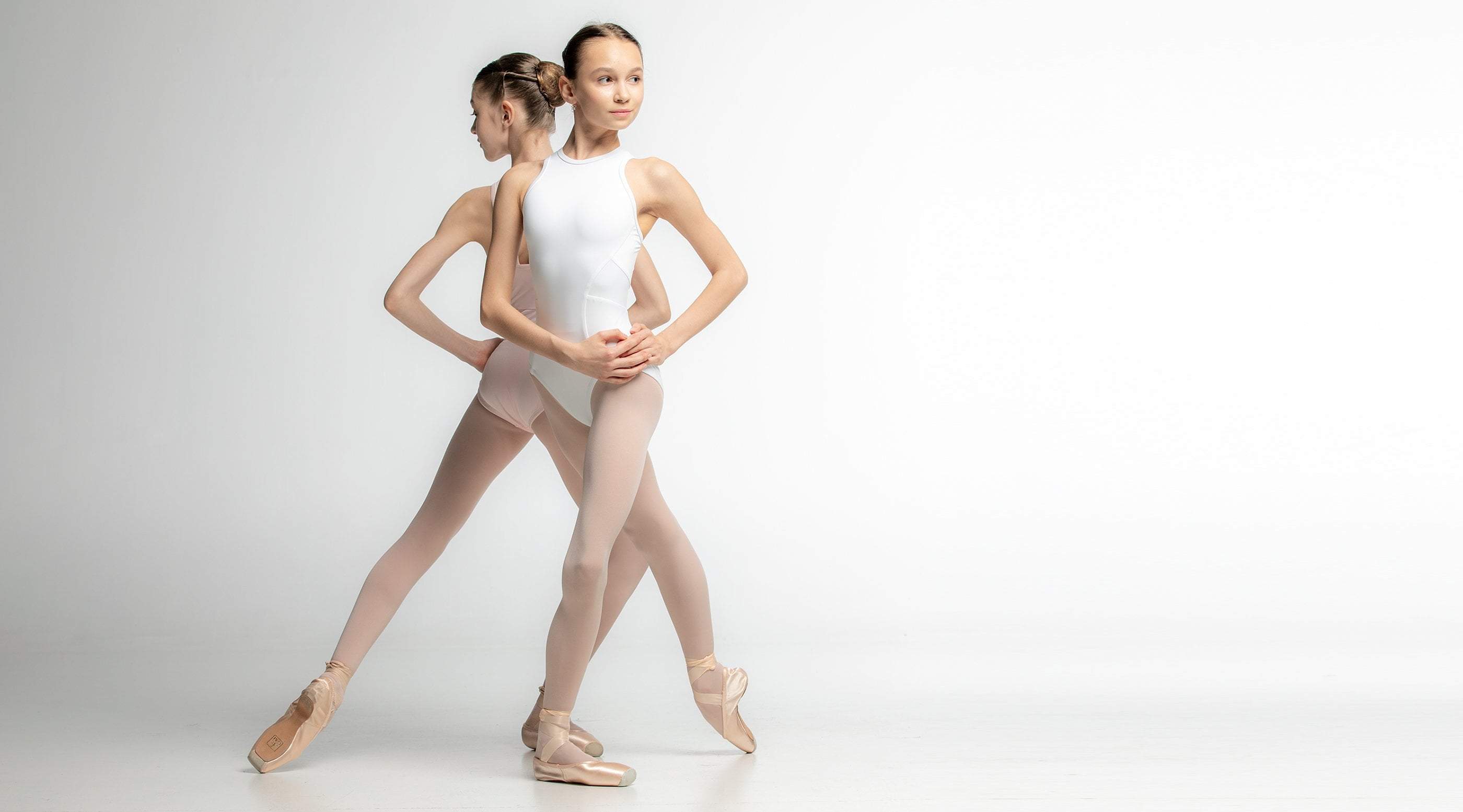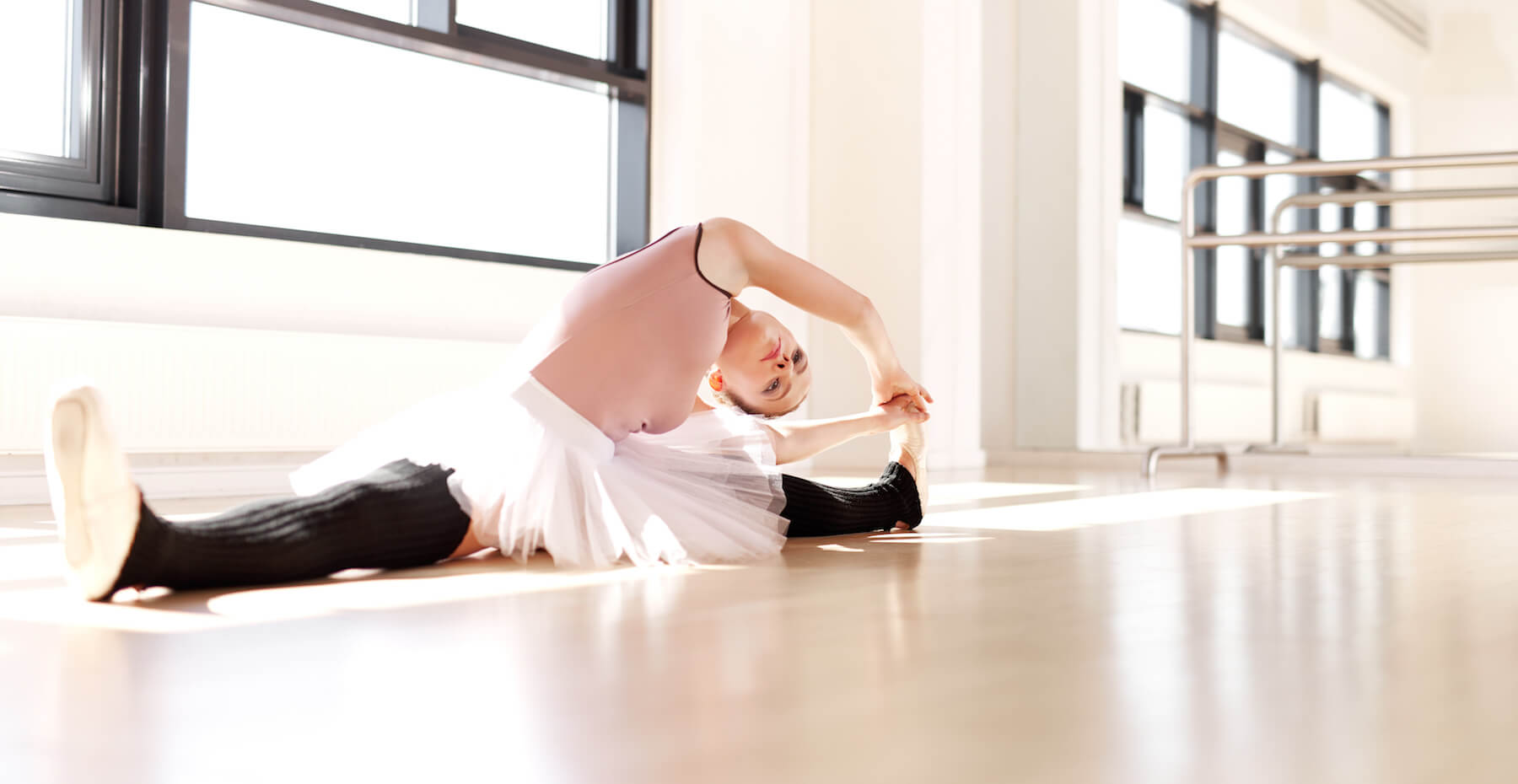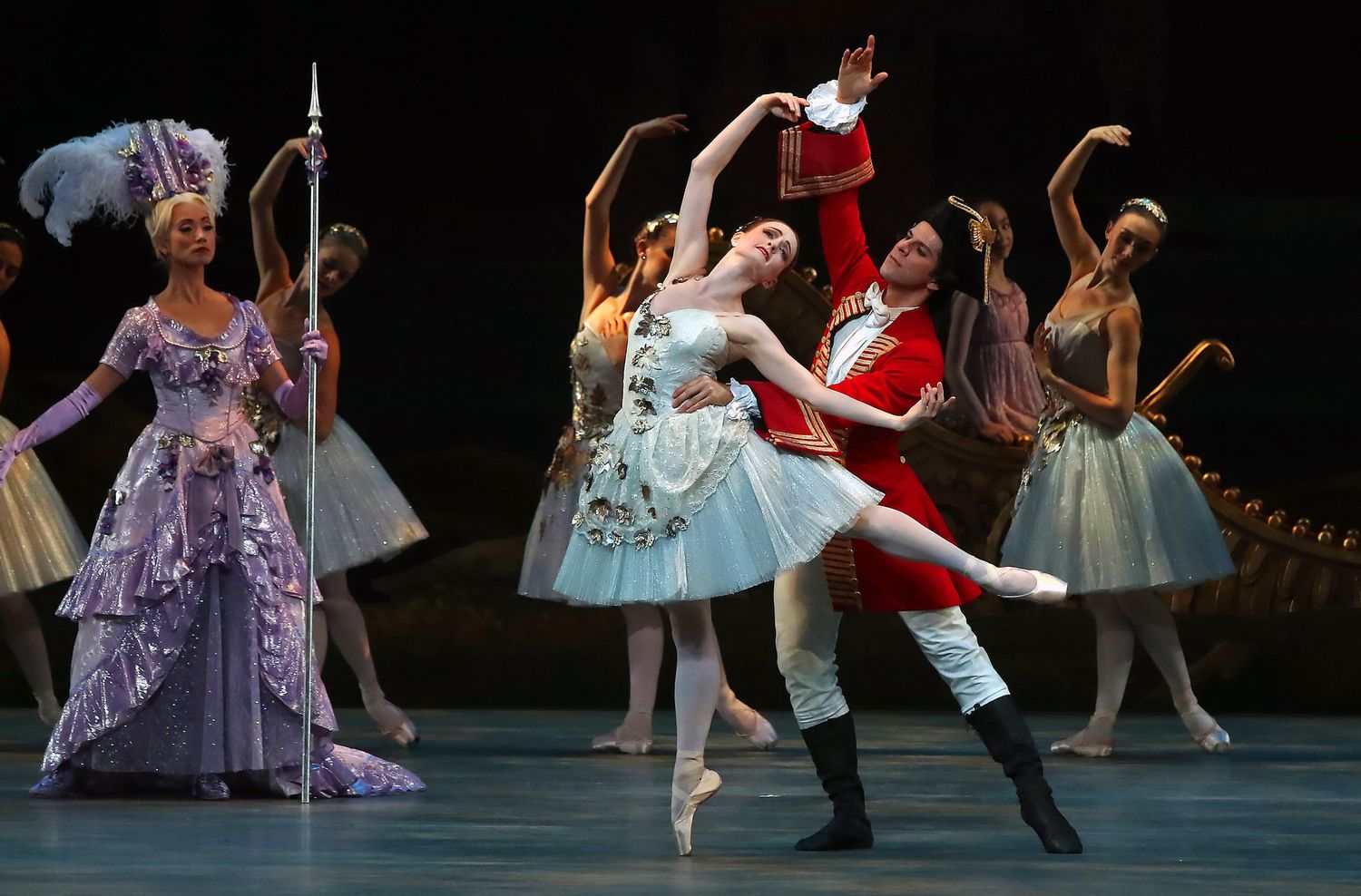Home>Events & Info>Ballet>Why Ballet Is Bad


Ballet
Why Ballet Is Bad
Modified: January 22, 2024
Discover the surprising reasons why ballet may not be as beneficial as you think. Uncover the potential risks and drawbacks associated with ballet training.
(Many of the links in this article redirect to a specific reviewed product. Your purchase of these products through affiliate links helps to generate commission for AudioLover.com, at no extra cost. Learn more)
Table of Contents
Introduction
Ballet is often hailed as a beautiful and graceful art form, captivating audiences with its stunning performances. From its origins in the Italian Renaissance courts to the grand productions on the world’s most prestigious stages, ballet has endured and evolved over centuries.
However, behind the elegance and enchantment lies a darker side to ballet that is seldom discussed. This article aims to shed light on some of the issues and challenges faced by ballet dancers, offering a comprehensive exploration of the potential negative aspects of this highly demanding art form.
While it is important to acknowledge the immense dedication, discipline, and talent required to excel in ballet, it is equally vital to recognize the less glamorous aspects that impact dancers physically, mentally, and financially.
Through this article, we will delve into the history of ballet, its physical demands, potential injuries, lack of diversity, unrealistic beauty standards, high cost of training, and its impact on mental health. Additionally, we will explore some alternative avenues for those who may be seeking a different path in the world of dance.
It is crucial to underline that this article does not aim to deter individuals from pursuing ballet or diminish the artistic and cultural significance of this dance form. Instead, it seeks to provide a balanced perspective, highlighting the challenges and concerns that deserve attention and discussion.
Now, let us embark on this journey to uncover the intricacies of the ballet world, exploring both its splendor and the pitfalls that lie within.
History of Ballet
Ballet has a rich and storied history that dates back to the Italian Renaissance courts of the 15th and 16th centuries. It originated as a form of entertainment and courtly display, where dancers would perform intricate movements accompanied by music and elaborate costumes.
During the late 17th century, ballet began to take shape in France under the reign of Louis XIV. He founded the Royal Academy of Dance, now known as the Paris Opera Ballet, which became the institutional home of ballet in Europe. It was during this time that ballet technique and vocabulary began to develop, laying the foundation for the art form as we know it today.
In the 19th century, ballet experienced a significant transformation known as the Romantic era. Composers such as Tchaikovsky and choreographers like Marius Petipa gave rise to iconic ballets such as Swan Lake, The Nutcracker, and Sleeping Beauty. These classical ballets continue to be cherished and performed worldwide.
As ballet spread throughout Europe and eventually across the globe, different styles and schools emerged. The Russian and Italian schools, for example, each had their own unique techniques and approaches to training. Over time, ballet has continued to evolve, incorporating elements of modern and contemporary dance styles, pushing the boundaries of movement and storytelling.
Today, ballet is celebrated as a highly disciplined and technically demanding art form. Dancers undergo years of intensive training, mastering precise footwork, intricate body positions, and impressive leaps and turns. The performances are often accompanied by elaborate sets, costumes, and live orchestral music.
The history of ballet is not without its controversies, as it reflects the social and cultural norms of the times. Traditional gender roles have largely defined ballet, with male dancers often playing powerful roles and female dancers embodying delicacy and grace. In recent years, however, there has been a push for more gender-inclusive casting and breaking stereotypes within the ballet community.
Overall, the history of ballet is a testament to its enduring appeal and its ability to captivate audiences for centuries. It continues to be a cherished art form, showcasing the dedication, artistry, and athleticism of dancers around the world.
Physical Demands of Ballet
Ballet is renowned for its demanding physicality, requiring dancers to possess exceptional strength, flexibility, and stamina. The intense training and rigorous technique of ballet place significant strain on the body, often pushing dancers to the limits of their physical capabilities.
One of the key elements of ballet is the emphasis on turnout, which involves rotating the hips and legs outward from the hip joints. This creates the signature aesthetic of ballet but puts immense pressure on the knees, ankles, and feet, leading to a higher risk of injuries and joint problems.
In addition to turnout, ballet demands precise and controlled movements, which require a fine-tuned balance between strength and flexibility. Dancers must have the strength to execute powerful jumps and turns while maintaining the elegance and grace that characterizes ballet. Achieving this balance requires years of training and conditioning.
Dancers also spend a significant amount of time on their toes, dancing en pointe. This requires extreme strength in the feet and ankles, as well as proper technique to distribute the body weight correctly. Dancing on pointe can lead to foot and ankle injuries, such as stress fractures, tendonitis, and bunions.
The physical demands of ballet training often lead to a high prevalence of injuries among dancers. Common injuries include sprains, strains, shin splints, stress fractures, and muscle imbalances. Dancers must navigate the fine line between pushing their bodies to excel and taking care to prevent long-term damage.
Due to the demanding nature of ballet, dancers face immense pressure to maintain a certain body shape and size. This can lead to unhealthy eating habits, body dysmorphia, and an unhealthy focus on weight. The pressure to achieve a ballet dancer’s “ideal” body often leads to disordered eating behaviors and a negative impact on mental health.
It is important to recognize and address the physical demands of ballet to ensure the well-being of dancers. Proper conditioning, cross-training, and rest periods are crucial to prevent injuries and maintain overall physical health. Balancing the demands of the art form with proper self-care is essential for a dancer’s longevity and sustainability in the ballet world.
Potential Injuries in Ballet
Ballet, with its intricate movements and demanding physicality, puts dancers at risk of various injuries. While injuries can occur in any physical activity, the repetitive and strenuous nature of ballet training often exacerbates the likelihood of sustaining injuries.
One common injury in ballet is sprained ankles. Repeated jumps, landings, and quick changes in direction can strain the ligaments surrounding the ankle joint. This can result in pain, swelling, and limited mobility, requiring rest and rehabilitation to heal properly.
Another prevalent injury among ballet dancers is stress fractures. These are small cracks in the bones, often caused by repetitive impact and overuse. Dancers’ feet and lower legs are particularly susceptible to stress fractures due to the constant pounding on hard surfaces and the strain of dancing en pointe.
Ballet dancers are also prone to tendonitis, inflammation of the tendons caused by repetitive movements. The constant stretching and contracting of tendons, combined with the high demands placed on them, can lead to irritation and pain. Common areas affected by tendonitis in ballet include the Achilles tendon, posterior tibial tendon, and the tendons in the wrists and fingers.
Additionally, ballet dancers may experience muscle strains and sprains. The intricate movements and extreme positions required in ballet can strain muscles, leading to strains or tears. This can occur in various muscle groups, including the hamstrings, quads, and hip flexors.
Ballet dancers may also face overuse injuries, such as shin splints. The repetitive movements and impact on hard surfaces can cause inflammation in the muscles and tissues surrounding the shinbone, resulting in pain and discomfort.
Moreover, poor technique or incorrect body alignment can lead to long-term structural issues. This includes conditions like hyperextended joints, scoliosis, and muscle imbalances. These issues can affect a dancer’s overall body alignment, stability, and increase the risk of further injuries.
To mitigate the risk of injuries, ballet dancers must prioritize proper warm-up and cool-down routines, cross-training, and maintaining a strong and balanced core. Strengthening surrounding muscles, such as the core, hips, and ankles, can provide support to vulnerable areas and reduce the risk of injury.
It is crucial for dancers to listen to their bodies and seek appropriate medical attention and rehabilitation when injuries occur. Ignoring or pushing through pain can exacerbate injuries and lead to long-term consequences. Proper rest and rehabilitation are vital to promote healing and prevent chronic injuries.
Overall, the physical demands of ballet place dancers at a higher risk of injuries. Understanding and addressing these risks are essential to ensure the well-being and longevity of ballet dancers in their pursuit of this beautiful art form.
Lack of Diversity in Ballet
One of the long-standing challenges in the world of ballet is the lack of diversity. Historically, ballet has been dominated by a specific image of what a ballet dancer should look like, often prioritizing a homogenous aesthetic that excludes individuals from diverse racial, ethnic, and body backgrounds.
The traditional notion of a ballet dancer has typically been associated with European features and a slim physique. This narrow standard of beauty has resulted in a lack of representation for dancers of different racial and ethnic backgrounds. People from diverse cultures and ethnicities have faced barriers in accessing ballet training and opportunities, perpetuating a lack of diversity in professional ballet companies.
Furthermore, the lack of diversity extends beyond ethnicity to body diversity. The emphasis on a specific body type, characterized by thinness and specific proportions, has created exclusionary standards that limit the participation of individuals with different body shapes and sizes. This discourages many talented dancers who do not fit the conventional mold from pursuing a career in ballet.
The lack of diversity in ballet has far-reaching implications in terms of representation, equity, and access to opportunities. It hinders the development of diverse artistic voices and perspectives within the art form, limiting the stories that can be told and the experiences that can be shared on stage.
Addressing the lack of diversity in ballet requires a multifaceted approach. Ballet companies and schools must actively work towards creating more inclusive and diverse environments by providing accessible training, actively recruiting dancers from underrepresented backgrounds, and fostering a culture that values and respects diversity.
Efforts are being made within the dance community to promote diversity and inclusivity. Initiatives such as mentorship programs, scholarships, and outreach programs aim to provide opportunities for aspiring dancers from diverse backgrounds. Organizations and individuals are challenging the traditional norms of ballet and actively working towards opening doors for underrepresented communities.
Additionally, increased representation and visibility of diverse dancers on stages and in leadership positions will help challenge the stereotypes and biases that have perpetuated the lack of diversity in ballet. By celebrating and embracing the talents of individuals from all walks of life, the ballet community can create a more inclusive and vibrant art form.
It is crucial for the ballet community to recognize the importance of diversity and take proactive steps towards dismantling the barriers that exist. By doing so, ballet can become a more inclusive and representative art form that reflects the richness and diversity of the world we live in.
Unrealistic Beauty Standards in Ballet
Ballet has long been associated with a narrow and unrealistic standard of beauty, placing immense pressure on dancers to conform to specific physical ideals. These beauty standards in ballet perpetuate harmful body image issues, negatively affecting the mental and physical well-being of dancers.
One of the prevailing beauty standards in ballet is the emphasis on a thin and lean physique. Dancers are often expected to maintain a low body weight, a requirement that can lead to disordered eating, extreme dieting, and unhealthy weight loss practices. The pursuit of a slim figure can be detrimental to a dancer’s physical health, as it may lead to nutritional deficiencies, weakened immune systems, and increased risk of injuries.
The pressure to meet these beauty standards can result in body dysmorphia and body dissatisfaction among ballet dancers. Constant scrutiny of one’s body, combined with the comparison to others in the ballet world, can lead to a negative self-image and a distorted perception of one’s appearance. This can have a profound impact on a dancer’s mental health and overall well-being.
Moreover, the ideal ballet body often excludes individuals who do not naturally possess certain physical attributes, such as long limbs or a specific body shape. This reinforces exclusionary beauty standards and limits the opportunities for talented dancers who do not fit the conventional mold. The lack of representation and diversity further perpetuates the narrow definition of beauty in ballet.
Addressing unrealistic beauty standards in ballet requires a paradigm shift within the dance community. Dancers, teachers, choreographers, and artistic directors must promote a healthier and more inclusive understanding of beauty. Emphasizing strength, artistry, and individuality can help redefine the standards of beauty in ballet.
Creating a supportive environment that values dancers’ overall well-being, rather than solely focusing on appearance, is key. This can be achieved through education and awareness programs that emphasize nutrition, body positivity, and mental health support. Dancers should be encouraged to prioritize self-care, listen to their bodies, and develop a positive relationship with food and exercise.
Furthermore, ballet companies and schools can play a crucial role in promoting diversity and body inclusivity. By casting a wide range of body types and celebrating dancers of all sizes and shapes, they can challenge the deeply ingrained beauty standards in ballet and inspire a more inclusive and accepting culture within the art form.
Ultimately, reevaluating and dismantling unrealistic beauty standards in ballet is essential for the well-being and longevity of dancers. Embracing diversity, promoting a positive body image, and valuing individuality will contribute to a healthier and more inclusive ballet community.
High Cost of Ballet Training
One of the significant challenges in pursuing a career in ballet is the high cost associated with training. From classes and costumes to specialized shoes and intensive programs, the financial burden of ballet can be overwhelming for aspiring dancers and their families.
Ballet training requires years of dedicated practice and instruction from highly skilled teachers. Private lessons, group classes, and workshops are necessary for developing technique, strength, and artistry. These classes often come with a hefty price tag, making them inaccessible to many who cannot afford the fees.
In addition to training fees, ballet dancers need specific attire and equipment. Ballet shoes, pointe shoes, leotards, tights, and other dancewear can quickly add up, especially as dancers grow and require frequent replacements. The costs can be even higher for female dancers who dance en pointe, as pointe shoes can be expensive and need to be replaced regularly.
Furthermore, there are often additional expenses associated with participating in ballet performances. Costume rentals, theater fees, travel costs, and other miscellaneous expenses can place a significant financial strain on dancers and their families. These costs can be particularly burdensome for those who come from low-income backgrounds.
The high cost of ballet training can create barriers and limit access to the art form. Talented individuals with potential may be deterred from pursuing ballet due to financial constraints. This lack of financial accessibility contributes to a lack of diversity within the ballet community, as individuals from underprivileged backgrounds often face difficulty in accessing training and opportunities.
Efforts are being made to address the financial challenges of ballet. Scholarships, financial aid programs, and outreach initiatives aim to provide opportunities for dancers from disadvantaged backgrounds. These initiatives help alleviate the financial burden and create more equitable access to ballet training.
It is crucial for the ballet industry to continue expanding these scholarship and financial aid programs to ensure that talented individuals, regardless of their financial resources, have the opportunity to pursue their passion for dance. Additionally, fostering partnerships with community organizations and schools can help create more affordable and accessible ballet training options.
By decreasing the financial barriers associated with ballet, the dance community can promote a more inclusive and diverse environment. This will not only enrich the art form but also provide opportunities for talented individuals who may not have had the means to pursue ballet otherwise.
Ultimately, addressing the high cost of ballet training is vital for creating a more accessible and equitable ballet community, fostering talent, and ensuring that the beauty and joy of ballet are not limited to those who can afford it.
Mental Health Concerns in Ballet
Ballet is not only physically demanding but can also have a significant impact on the mental well-being of dancers. The intense pressure to excel, the competitive nature of the industry, and the relentless pursuit of perfection can take a toll on the mental health of ballet dancers.
One of the primary mental health concerns in ballet is the prevalence of body image issues. The emphasis on a slim and idealized physique may lead to body dysmorphia, negative self-image, and a disproportionate focus on weight and appearance. Dancers often feel the pressure to conform to unrealistic beauty standards, resulting in low self-esteem and body dissatisfaction.
The constant pursuit of perfection in technique and performance can contribute to feelings of inadequacy, self-doubt, and high levels of self-criticism. Ballet dancers are expected to achieve flawless and technically precise movements, leaving little room for error or mistakes. This relentless pursuit of perfection can put immense strain on their mental well-being and lead to increased anxiety and self-imposed pressure.
The competitive nature of the ballet industry adds another layer of stress to the mental health of dancers. The limited number of opportunities and the constant comparison to peers can create an intensely competitive environment, resulting in feelings of insecurity and self-doubt. Constant evaluations, auditions, and the fear of rejection can contribute to anxiety, depression, and burnout.
Furthermore, the rigorous training schedules, long hours of rehearsals, and physical demands of ballet can lead to exhaustion and chronic fatigue. The constant balancing act of managing school or work alongside intense training can also add additional stress and impact mental well-being.
Addressing mental health concerns in ballet requires a shift in the culture and attitudes within the dance community. Open discussions about mental health and the importance of self-care need to be encouraged and supported. Providing resources and access to mental health professionals can help dancers navigate the challenges they face and develop healthy coping mechanisms.
Ballet companies and schools should prioritize the mental well-being of dancers by implementing policies that promote work-life balance, stress management techniques, and providing support networks. Creating a positive and collaborative environment that emphasizes the value of mental health can contribute to the overall well-being and longevity of dancers.
Individual dancers must also prioritize their mental health and practice self-care. This may include seeking therapy, incorporating mindfulness and relaxation techniques into their routine, and fostering a positive relationship with their bodies.
By addressing mental health concerns in ballet, the dance community can ensure that dancers receive the support they need to thrive both physically and mentally. Promoting a more holistic and compassionate approach to ballet will benefit the well-being of dancers and contribute to a healthier and more sustainable art form.
Alternatives to Ballet
While ballet is a beautiful and revered art form, it is not the only avenue for individuals passionate about dance. There are several alternative dance styles that offer unique movement vocabulary, creativity, and self-expression. Exploring these alternatives can open up new opportunities and pathways for dancers who may not resonate with ballet.
1. Contemporary Dance: Contemporary dance is a versatile and expressive dance form that incorporates elements of ballet, modern dance, and improvisation. It allows dancers to explore their creativity, challenge traditional movement patterns, and experiment with different styles and techniques. Contemporary dance emphasizes fluidity, interpretation, and personal expression, making it a popular choice for those seeking a more contemporary approach to dance.
2. Jazz Dance: Jazz dance is a dynamic and energetic dance style that originated from African and Caribbean rhythms. It incorporates elements of ballet, modern dance, and street dance, putting a strong emphasis on rhythm, isolations, and syncopated movements. Jazz dance offers dancers the opportunity to explore a wide range of styles, from Broadway jazz to commercial jazz, and is known for its vibrant and high-energy performances.
3. Hip-Hop Dance: Hip-hop dance emerged from African American and urban communities and has evolved into a global phenomenon. It is characterized by its dynamic and intricate movements, often performed to hip-hop music. Hip-hop encompasses a wide range of styles, including breaking, popping, locking, and krumping. It offers dancers the chance to develop their groove, musicality, and urban dance vocabulary.
4. Contemporary Ballet/Neo-classical: For those who appreciate the technicality of ballet but desire a more contemporary approach, contemporary ballet or neo-classical ballet may be a suitable option. These styles blend the traditional ballet techniques with a contemporary movement aesthetic, allowing for a more fluid and expressive interpretation of classical ballet vocabulary.
5. Latin Dance: Latin dance encompasses various styles, such as salsa, bachata, merengue, and cha-cha-cha. These dances are known for their vibrant rhythms, sensual movements, and social dance aspects. Latin dance offers an opportunity to explore different cultural expressions through dance and embrace the joy of partner dancing.
6. Musical Theatre Dance: Musical theatre dance combines elements of jazz, ballet, and tap, showcasing storytelling through movement. This style is often seen in Broadway productions and involves incorporating acting, singing, and dancing to create dynamic and theatrical performances. Musical theatre dance allows dancers to explore character development, storytelling, and stage presence.
Exploring these alternatives to ballet can broaden a dancer’s skills, artistic range, and opportunities for performance. It is important to find a style that resonates with an individual’s personal interests, strengths, and artistic goals.
While ballet holds a special place in the dance world, there are countless other dance forms that offer diversity, creativity, and artistic fulfillment. By embracing these alternatives, dancers can explore new movement possibilities and find their unique voice in the world of dance.
Conclusion
Ballet is undeniably a captivating and beautiful art form that has enchanted audiences for centuries. However, it is essential to acknowledge the challenges and concerns that exist within the ballet world. From the physical demands and potential injuries to the lack of diversity, unrealistic beauty standards, high cost of training, and mental health concerns, there are numerous aspects that warrant attention and discussion.
While it is crucial to appreciate the dedication, discipline, and talent of ballet dancers, it is equally important to foster a more inclusive and supportive environment within the dance community. By addressing these issues head-on, the ballet world can become more sustainable, diverse, and empathetic to the well-being of its dancers.
Recognizing the immense physical demands of ballet, it is imperative to prioritize the health and safety of dancers. Proper training techniques, rest periods, and emphasis on self-care are essential for preventing injuries and ensuring long-term well-being.
The lack of diversity in ballet is a concerning issue that needs urgent attention. By actively working towards creating inclusive and diverse spaces, ballet can break free from the confines of a narrow aesthetic and celebrate the beauty of dancers from all racial, ethnic, and body backgrounds.
Unrealistic beauty standards in ballet perpetuate harmful body image issues and contribute to mental health concerns among dancers. Promoting a healthier understanding of beauty, valuing individuality, and fostering positive body image can create a more compassionate and supportive environment for dancers.
High costs associated with ballet training present barriers to entry for many aspiring dancers. By providing more scholarships, financial aid programs, and affordable training options, the ballet community can foster greater inclusivity and ensure that talent is not limited by financial resources.
Mental health concerns in ballet must be addressed through open conversations, supportive environments, and access to mental health resources. Prioritizing the well-being of dancers and challenging the culture of perfectionism can nurture a healthier and more sustainable ballet community.
Lastly, exploring alternatives to ballet can offer dancers a broader range of opportunities for self-expression and artistic fulfillment. Embracing diverse dance styles and celebrating individuality can enrich the dance world and provide more pathways for aspiring dancers.
In conclusion, while ballet possesses undeniable beauty and artistry, it is vital to acknowledge and address the challenges and concerns within the art form. By promoting inclusivity, supporting the well-being of dancers, and embracing alternative dance styles, the ballet community can evolve into a more diverse, sustainable, and inclusive space for all passionate individuals to thrive and flourish.











